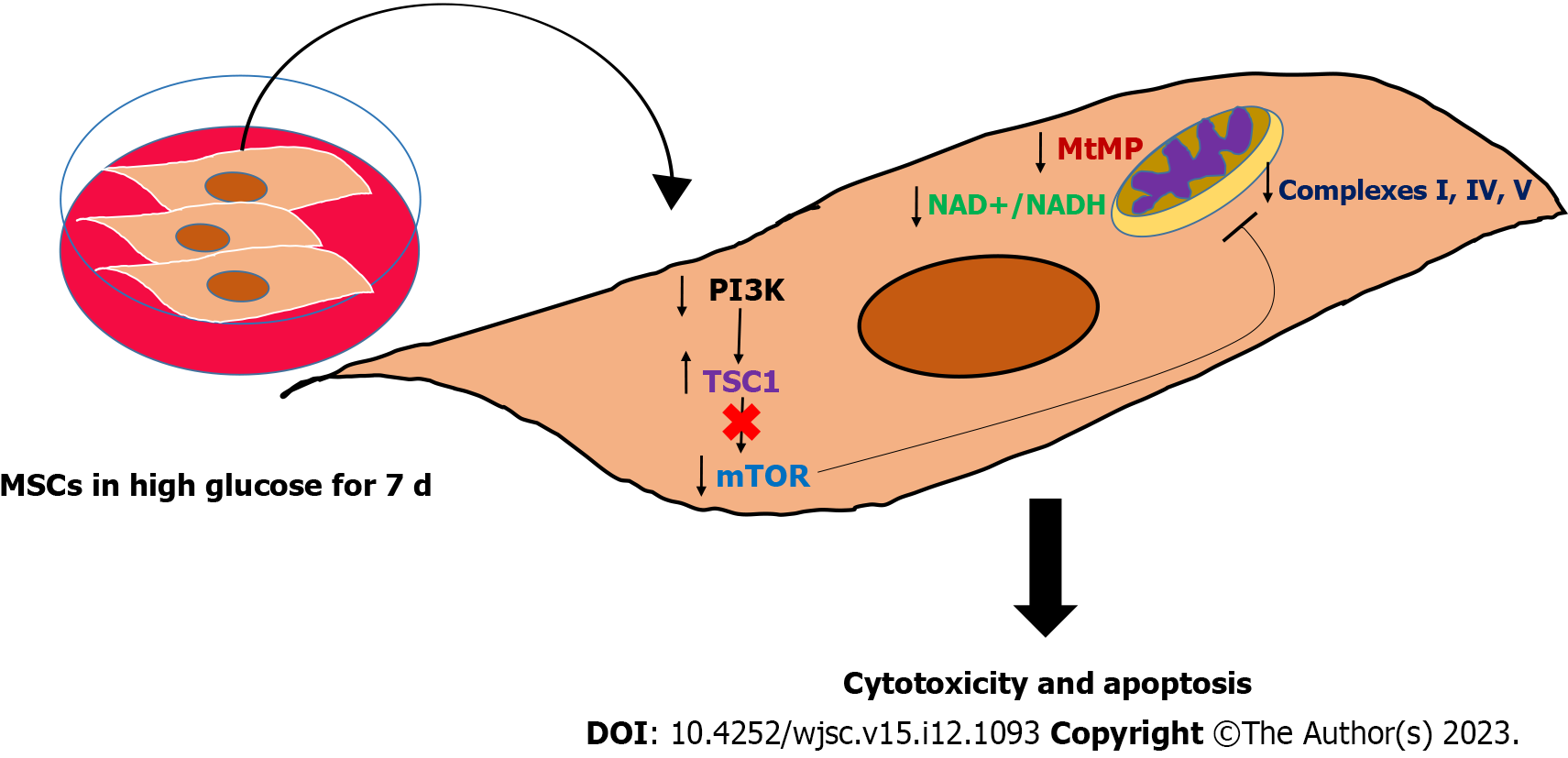Copyright
©The Author(s) 2023.
World J Stem Cells. Dec 26, 2023; 15(12): 1093-1103
Published online Dec 26, 2023. doi: 10.4252/wjsc.v15.i12.1093
Published online Dec 26, 2023. doi: 10.4252/wjsc.v15.i12.1093
Figure 7 Graphical summary of the study findings.
High glucose impaired the mitochondrial function in mesenchymal stem cells (MSCs) by perturbing many mitochondrial regulatory dynamics and factors, particularly mitochondrial membrane potential, nicotinamide adenine dinucleotide (NAD+)/NADH pool, and mammalian target of rapamycin protein. This mitochondrial dysfunction is associated with triggering apoptosis in MSCs, which mechanistically explained the poor survival of MSCs in hyperglycemia. MSCs: Mesenchymal stem cells; PI3K: Phosphatidylinositol 3-kinase; mTOR: Mammalian target of rapamycin; NAD+: Nicotinamide adenine dinucleotide.
- Citation: Abu-El-Rub E, Almahasneh F, Khasawneh RR, Alzu'bi A, Ghorab D, Almazari R, Magableh H, Sanajleh A, Shlool H, Mazari M, Bader NS, Al-Momani J. Human mesenchymal stem cells exhibit altered mitochondrial dynamics and poor survival in high glucose microenvironment. World J Stem Cells 2023; 15(12): 1093-1103
- URL: https://www.wjgnet.com/1948-0210/full/v15/i12/1093.htm
- DOI: https://dx.doi.org/10.4252/wjsc.v15.i12.1093









